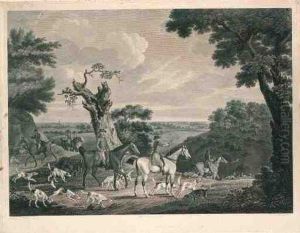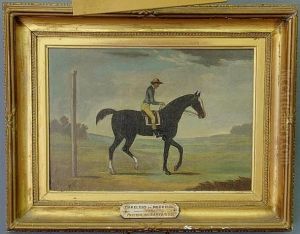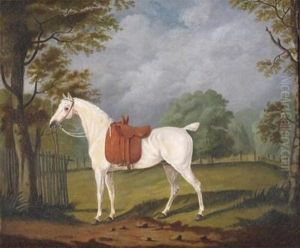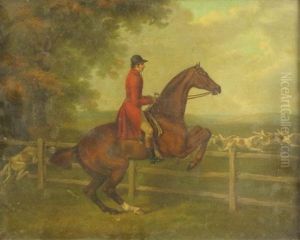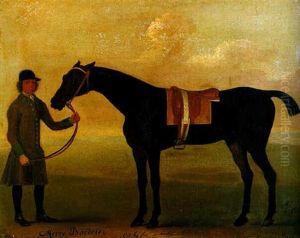John Sartorius Paintings
John Sartorius, a name synonymous with the golden age of British sporting art, was a prominent painter in the 18th century, whose life and works are a window into the evolving British society and its burgeoning interest in leisure and sporting activities. Though the exact year of his birth remains uncertain, it is broadly accepted that his career flourished in the mid to late 1700s, marking him as a critical figure in the development of equine and hunting art in England. Sartorius hailed from a family of artists, which included his father, Francis Sartorius, and later, his son, John Nost Sartorius, both of whom were also esteemed in the realm of sporting art. This lineage underscored a dynasty that significantly influenced the portrayal of sporting themes in British art.
John Sartorius specialized in capturing the dynamism and elegance of the hunt, the race, and the pastoral landscape, embodying the spirit and cultural priorities of the Georgian era. His works are characterized by their meticulous attention to detail, particularly in the depiction of horses, which were rendered with remarkable accuracy and vivacity. Sartorius's commitment to realism and his ability to convey the movement and emotion of his subjects set his work apart from his contemporaries and endeared him to patrons across the British Isles.
Throughout his career, Sartorius received commissions from notable figures of the day, including members of the aristocracy and the burgeoning gentry, who sought to immortalize their favorite horses and hunting scenes. His paintings, often large in scale, were not only visual celebrations of the sporting life but also served as symbols of social status and prestige. Despite the popularity of his work during his lifetime, detailed records of his life, including the precise dates of his birth and death, remain elusive, lending an air of mystery to his legacy.
Sartorius's contribution to British art history cannot be overstated. By the time of his death in 1780, he had established a visual lexicon for the representation of equestrian and sporting subjects that would influence generations of artists to come. His legacy, carried on through his descendants, ensured that the Sartorius family name remained at the forefront of British sporting art well into the 19th century. Today, John Sartorius's works are celebrated for their historical value and artistic merit, offering insight into the social and cultural fabric of 18th-century England and enduring as cherished exemplars of sporting art.
